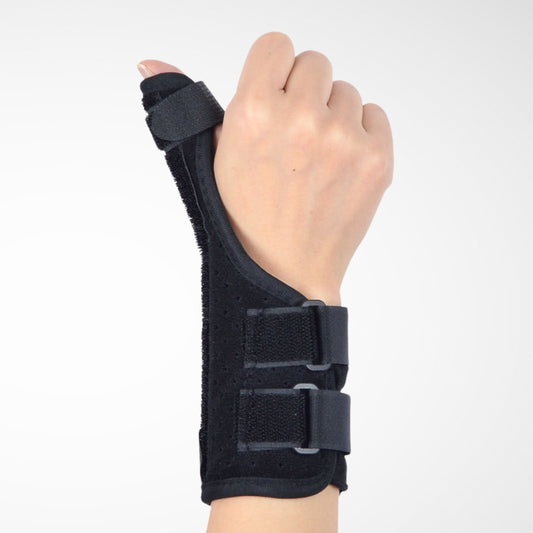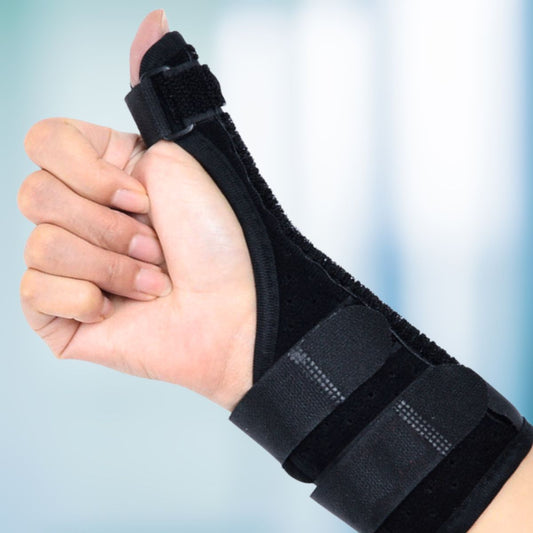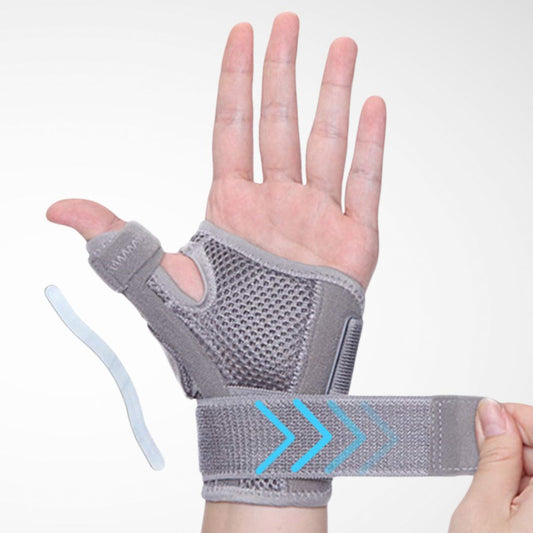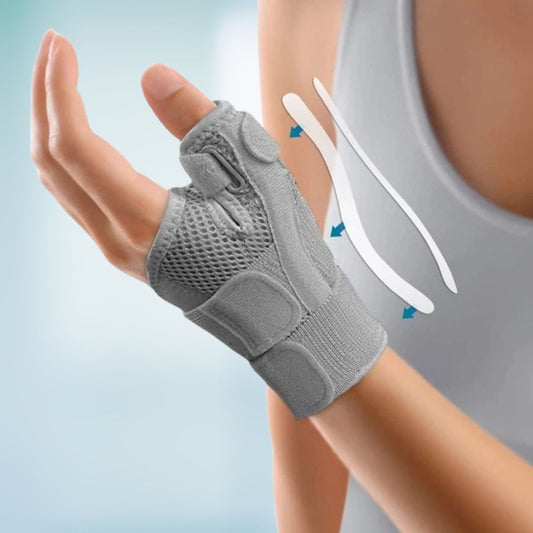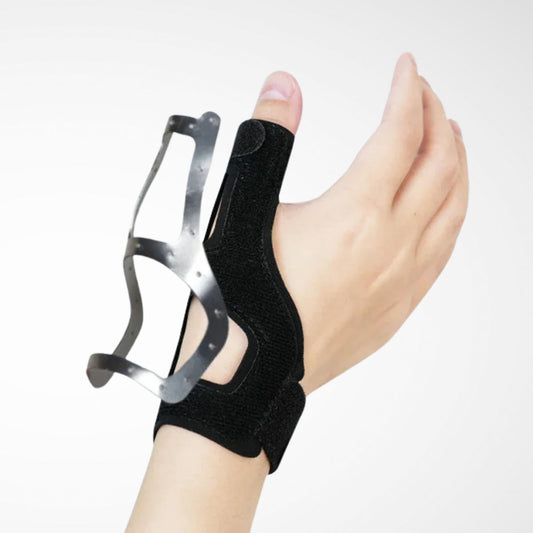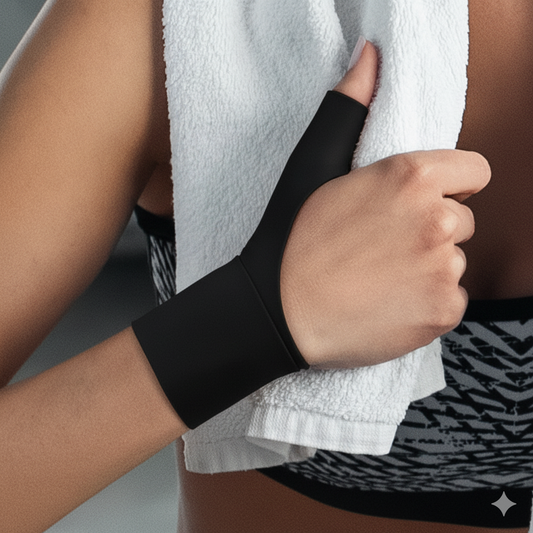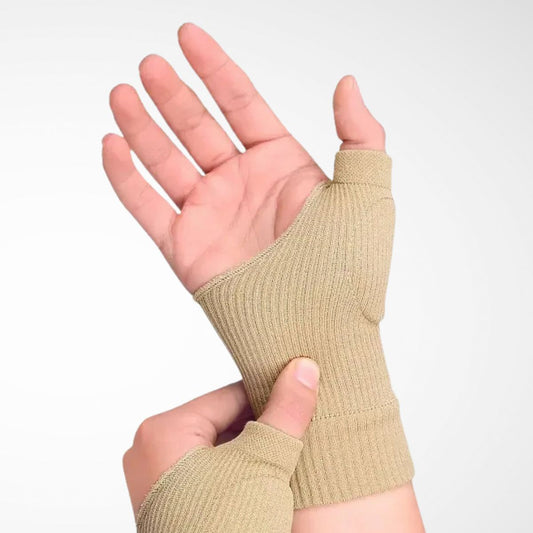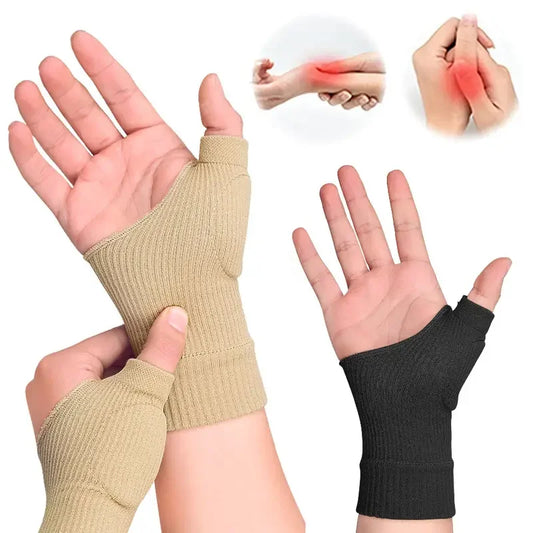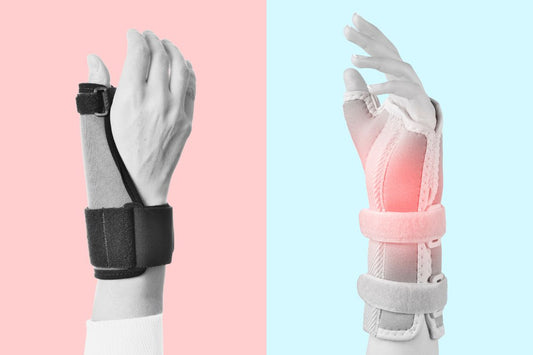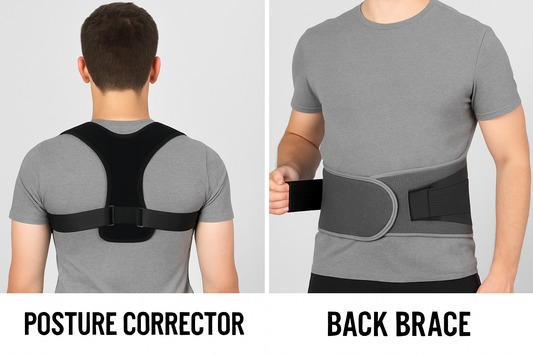Introduction
Your thumbs do more work than you might think. From gripping, typing, and lifting to texting or holding tools, this small joint plays a huge role in your daily life. That’s why a thumb injury—no matter how minor it seems—can throw off everything from your morning routine to your favorite hobbies. While some thumb injuries are caused by accidents, others build up over time due to repetitive strain. In this article, we’ll explore some of the most common types of thumb injuries, what causes them, and how they’re typically treated.
Skier’s Thumb
Skier’s Thumb is one of the most frequent acute thumb injuries, especially among winter sports enthusiasts. It refers to an injury of the ulnar collateral ligament (UCL), located at the base of the thumb.
- Cause: Often occurs when a skier falls while holding a ski pole, forcing the thumb backward.
- Symptoms: Pain and swelling on the inner side of the thumb, weakness in pinching or gripping, and sometimes bruising.
- Treatment: Mild cases may heal with rest, ice, and a thumb spica splint. Severe tears may require surgery.
Interestingly, you don’t have to be a skier to get Skier’s Thumb—it can also happen from any fall where the thumb is overstretched.
Thumb Tendonitis (De Quervain’s Tenosynovitis)
Thumb tendonitis is a repetitive strain injury affecting the tendons on the thumb side of the wrist. It’s also known as De Quervain’s Tenosynovitis.
- Cause: Repetitive thumb or wrist movements such as texting, gaming, lifting a baby, or even prolonged typing.
- Symptoms: Pain near the base of the thumb, swelling, and a feeling of catching or snapping when moving the thumb.
- Treatment: Rest, thumb splints, anti-inflammatory medication, and in some cases, physical therapy.
Many people with active lifestyles, including parents and office workers, experience this condition at some point.
Thumb Sprains
A thumb sprain happens when the ligaments supporting the thumb joint are stretched or partially torn, but without the full ligament rupture seen in Skier’s Thumb.
- Cause: Falls, sudden impacts, or overextension.
- Symptoms: Swelling, tenderness, bruising, and reduced thumb movement.
-
Severity Grades:
- Grade I: Ligament stretched, minor swelling.
- Grade II: Partial tear, more noticeable swelling and instability.
- Grade III: Complete tear, severe pain, and significant loss of thumb function.
- Treatment: Ranges from simple rest and splinting to surgical repair for severe sprains.
Thumb Fractures
A fracture involves a break in one of the thumb bones, often from direct trauma.
- Cause: Falling on an outstretched hand, sports injuries, or accidents.
- Symptoms: Immediate sharp pain, visible deformity, swelling, bruising, and inability to move the thumb.
- Treatment: Requires immediate medical attention. X-rays are used to confirm the break. Immobilization or surgery may follow depending on the fracture type.
Fractures should never be ignored, as improper healing can lead to long-term stiffness or arthritis.
Trigger Thumb
Trigger Thumb (or trigger finger) occurs when the tendon that controls thumb movement becomes inflamed or thickened, making the thumb catch or lock in place.
- Cause: Often due to repetitive gripping or forceful thumb use.
- Symptoms: Pain at the base of the thumb, locking or popping sensation, stiffness in the morning.
- Treatment: Rest, splints, gentle stretching, and in some cases, corticosteroid injections.
While it might sound minor, Trigger Thumb can become quite bothersome if left untreated.
When to See a Doctor
Not all thumb pain needs urgent care, but there are clear signs when you should seek professional help:
- Severe swelling or bruising.
- Inability to move the thumb.
- Persistent pain that doesn’t improve with rest.
- Deformity or signs of fracture.
Getting the right attention early can prevent further complications and speed up recovery.
Preventing Thumb Injuries
- For Athletes: Always warm up before intense activity and use protective gear like wrist guards or thumb supports if needed.
- In Daily Life: Keep your workstation ergonomic, take breaks from repetitive tasks, and use proper lifting techniques.
Simple precautions can help avoid most strain-related injuries.
Final Thoughts
Thumb injuries, while often underestimated, can significantly disrupt your daily life. Whether it’s a sudden impact like Skier’s Thumb or a gradual issue like tendonitis, early recognition and proper care make a big difference. Understanding the types of thumb injuries helps you stay proactive about prevention and treatment.
If thumb pain lingers or worsens, don’t hesitate to get it checked out by a healthcare professional. The sooner you address it, the better your chances of a smooth and full recovery.


